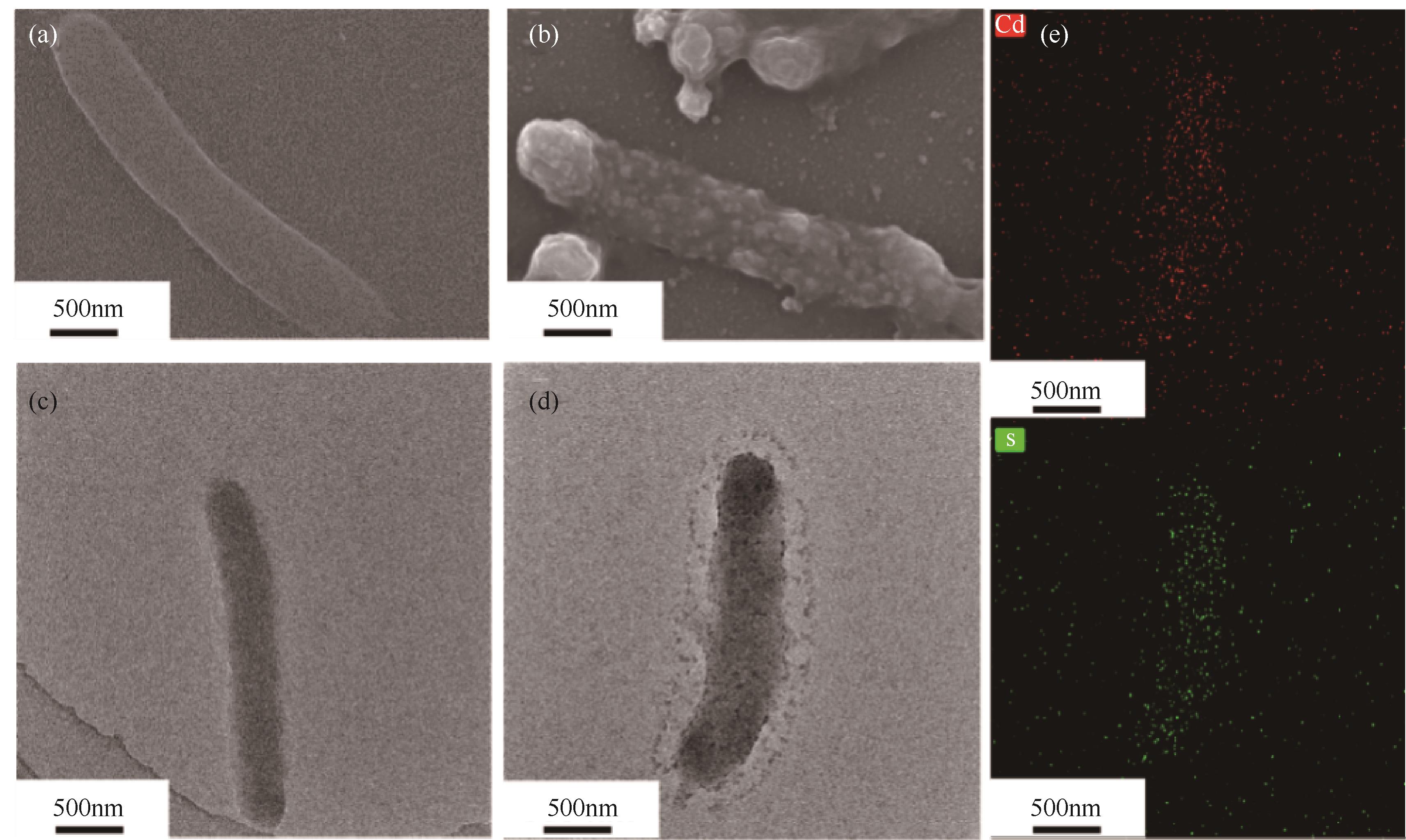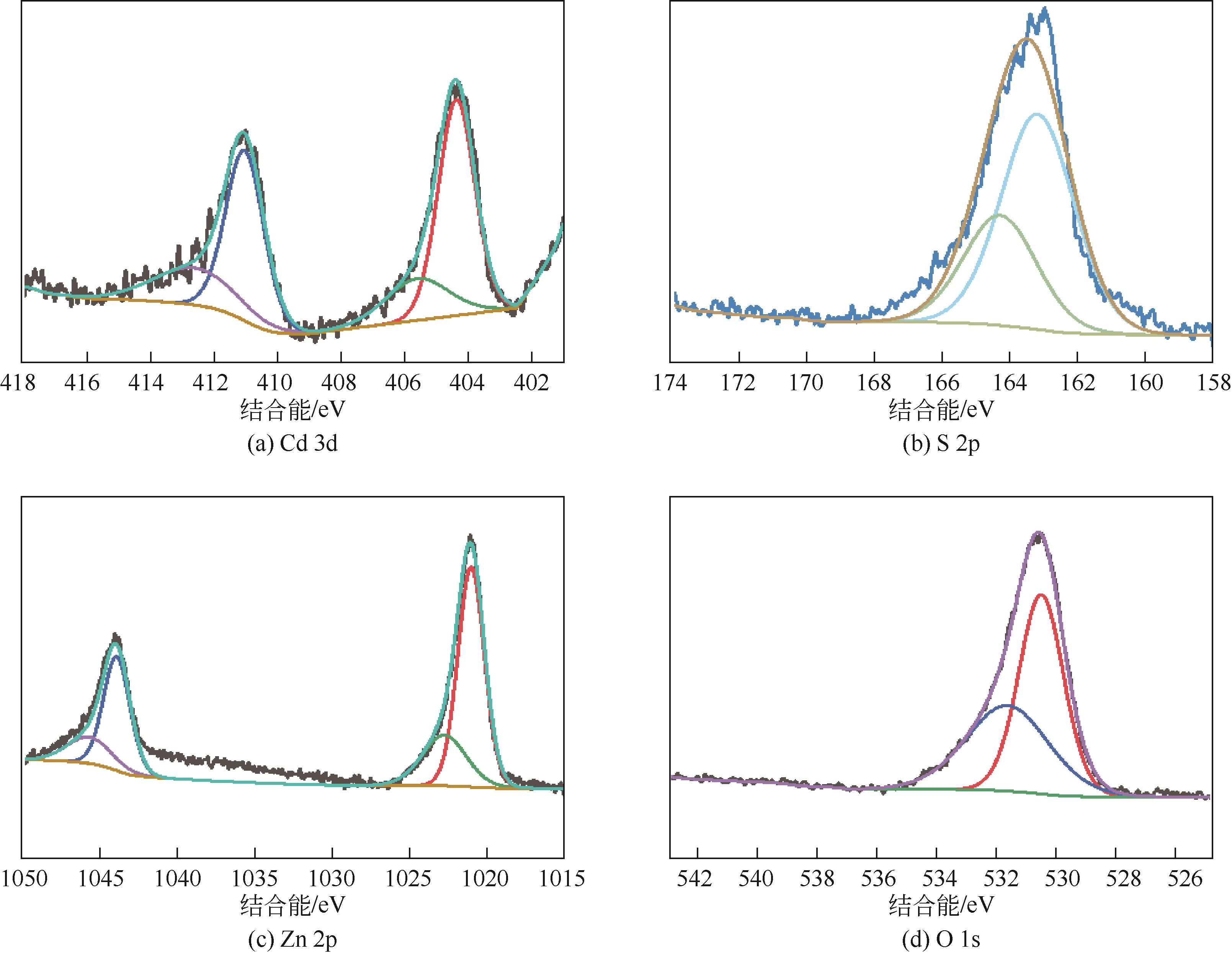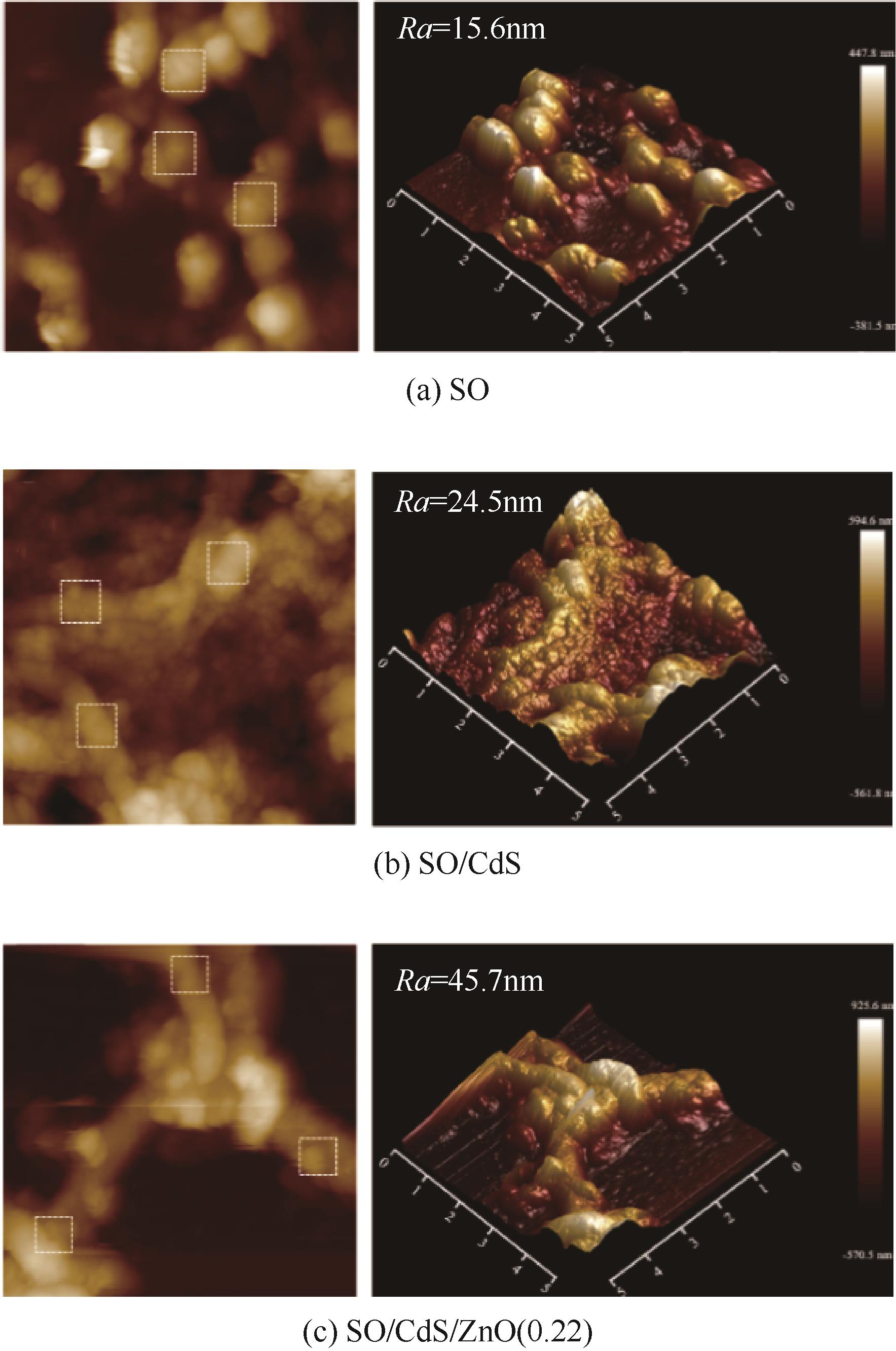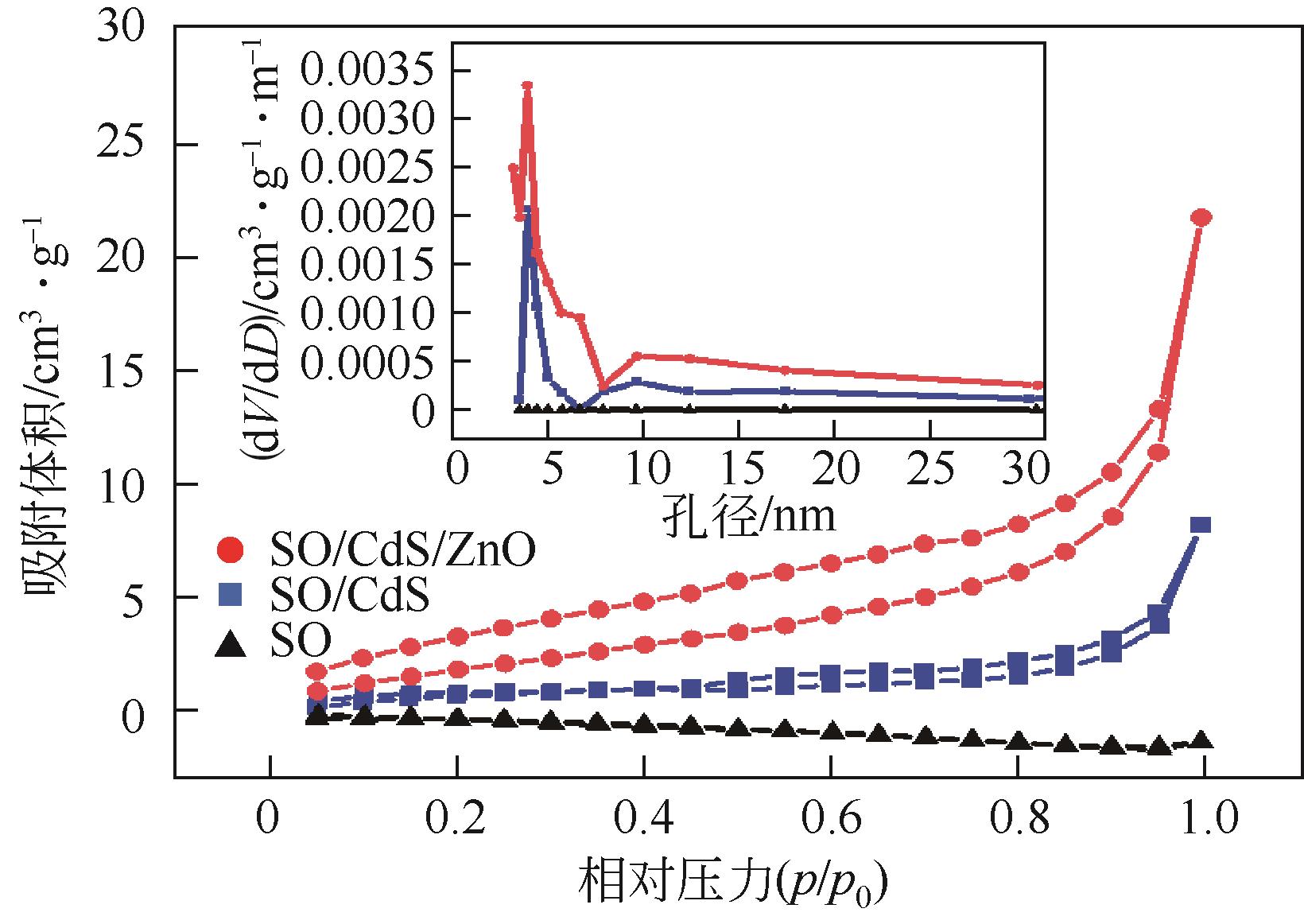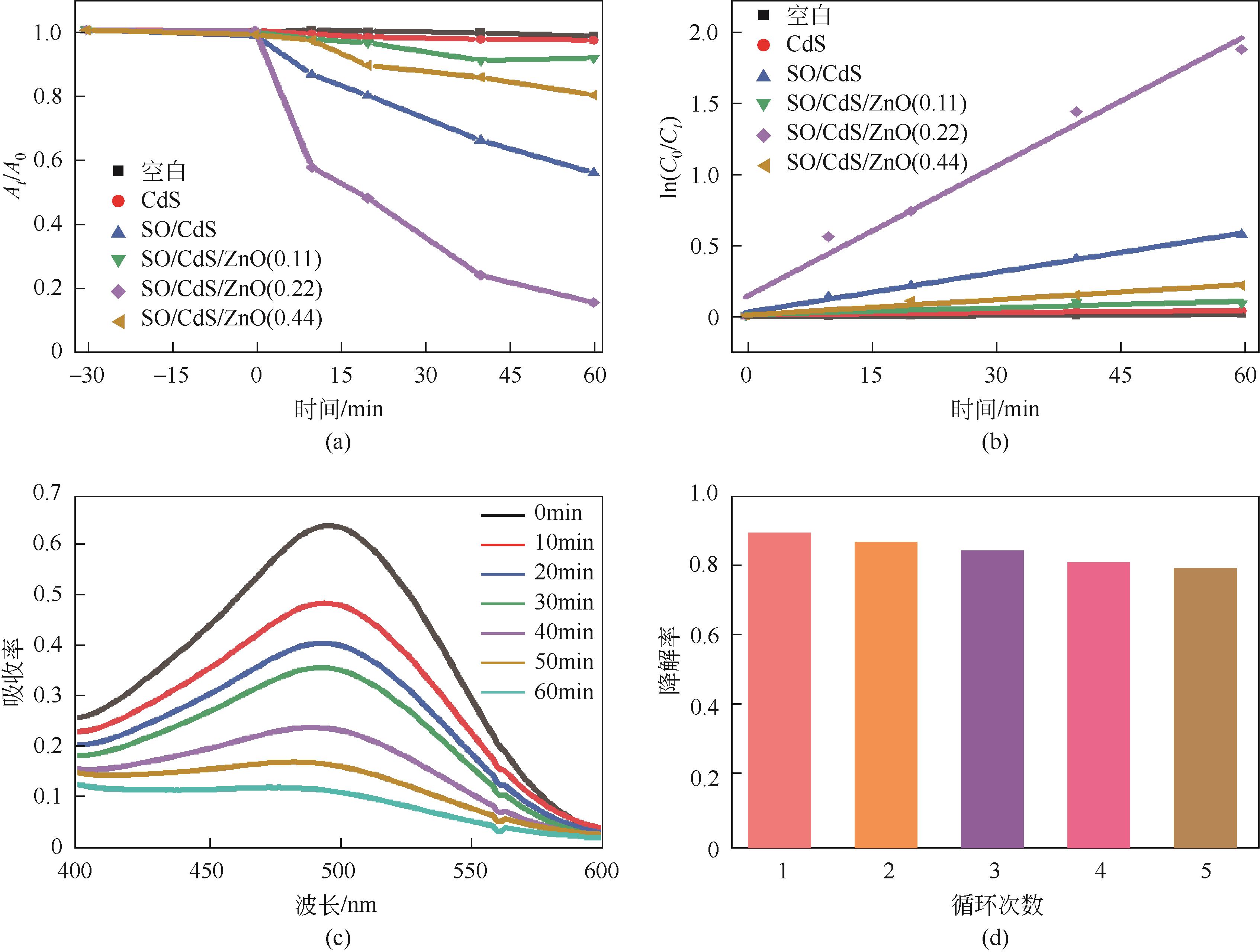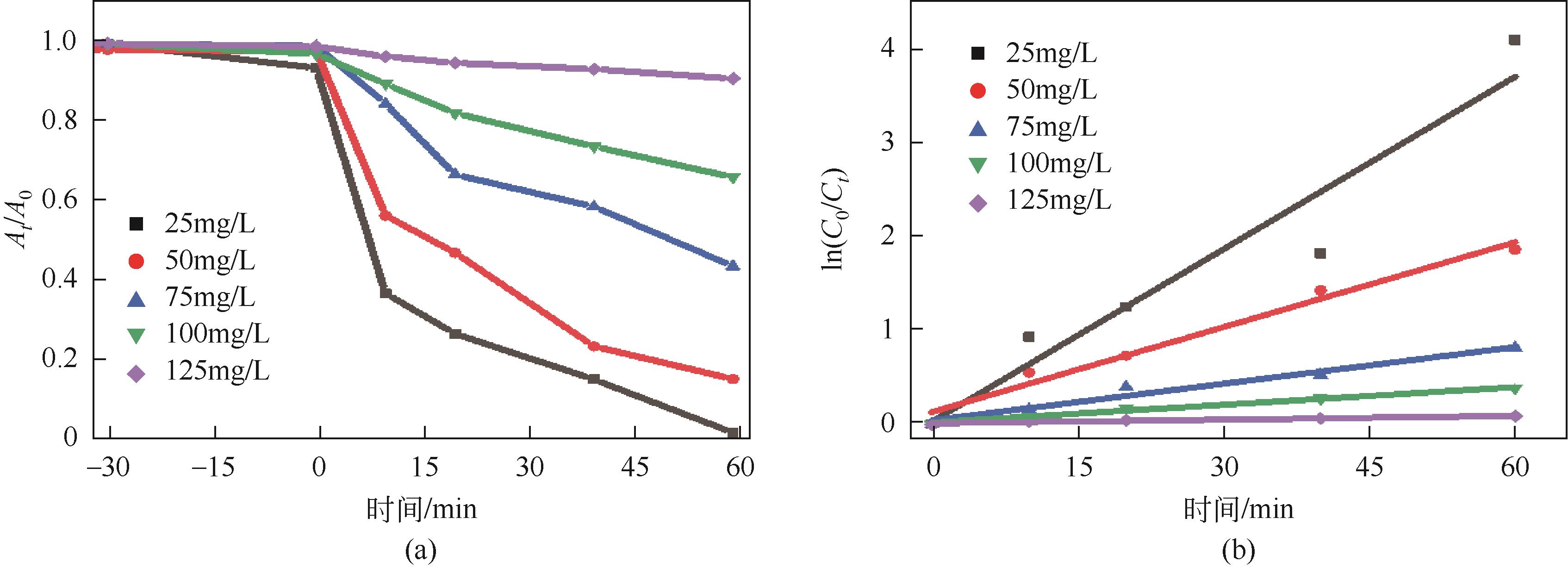Chemical Industry and Engineering Progress ›› 2023, Vol. 42 ›› Issue (11): 5908-5919.DOI: 10.16085/j.issn.1000-6613.2023-0019
• Biochemical and pharmaceutical engineering • Previous Articles
Preparation and photocatalysis application of integrated nanocatalysts based on genetic engineering Shewanella oneidensis strain
LIU Ya1( ), LI Jingru1, CAI Dongren1, ZHOU Shufeng1, WANG Yuanpeng2, ZHAN Guowu1(
), LI Jingru1, CAI Dongren1, ZHOU Shufeng1, WANG Yuanpeng2, ZHAN Guowu1( ), LI Qingbiao2,3
), LI Qingbiao2,3
- 1.Integrated Nanocatalysts Institute (INCI), Huaqiao University, Xiamen 361021, Fujian, China
2.College of Chemistry and Chemical Engineering, Xiamen University, Xiamen 351100, Fujian, China
3.College of Food and Biology Engineering, Jimei University, Xiamen 361021, Fujian, China
-
Received:2023-01-06Revised:2023-02-07Online:2023-12-15Published:2023-11-20 -
Contact:ZHAN Guowu
基于希瓦氏菌基因工程菌制备集成催化剂及光催化性能
刘亚1( ), 李静茹1, 蔡东仁1, 周树锋1, 王远鹏2, 詹国武1(
), 李静茹1, 蔡东仁1, 周树锋1, 王远鹏2, 詹国武1( ), 李清彪2,3
), 李清彪2,3
- 1.华侨大学集成催化剂研究中心,福建 厦门 361021
2.厦门大学化学化工学院,福建 厦门 351100
3.集美大学食品科学与工程学院,福建 厦门 361021
-
通讯作者:詹国武 -
作者简介:刘亚(1996—),女,硕士研究生,研究方向为集成催化剂。E-mail:1215488720@qq.com。 -
基金资助:国家自然科学基金(U21A20324)
CLC Number:
Cite this article
LIU Ya, LI Jingru, CAI Dongren, ZHOU Shufeng, WANG Yuanpeng, ZHAN Guowu, LI Qingbiao. Preparation and photocatalysis application of integrated nanocatalysts based on genetic engineering Shewanella oneidensis strain[J]. Chemical Industry and Engineering Progress, 2023, 42(11): 5908-5919.
刘亚, 李静茹, 蔡东仁, 周树锋, 王远鹏, 詹国武, 李清彪. 基于希瓦氏菌基因工程菌制备集成催化剂及光催化性能[J]. 化工进展, 2023, 42(11): 5908-5919.
share this article
Add to citation manager EndNote|Ris|BibTeX
URL: https://hgjz.cip.com.cn/EN/10.16085/j.issn.1000-6613.2023-0019
| 光催化剂 | 合成方法 | 染料种类(浓度) | 光催化剂使用量/mg | 染料去除率/% | 反应速率常数k/min-1 | 去除时间/h | 参考 文献 |
|---|---|---|---|---|---|---|---|
| SO/CdS/ZnO | 生物模板法 | 刚果红(50mg/L) | 10 | 90 | 0.03 | 1 | 本文 |
| CdS/ZrO2 | 化学共沉淀法 | 刚果红(30mg/L) | 10 | 84 | — | 2 | [ |
| CdS/GA | 化学沉淀法 | 刚果红(40mg/L) | 40 | 100 | 0.027 | 2 | [ |
| CdS/ZnO | 水热沉淀法 | 罗丹明B(10mg/L) | 100 | 98 | 0.076 | 1.5 | [ |
| CS/CdS | 模拟生物矿化 | 刚果红(20mg/L) | — | 86 | 0.011 | 3 | [ |
| CdS/Cu(OH)2/CuO@PVA | 化学合成法 | 刚果红(10mg/L) | 10 | 92 | — | 2 | [ |
| Co3O4/TiO2/GO | 溶胶-凝胶法和水热法合 | 刚果红(10mg/L) | 50 | 91 | — | 1.5 | [ |
| TiO2/ZrO2 | 微波水热法 | 罗丹明B(10mg/L) | 50 | 91 | — | 4.5 | [ |
| Ag/ZnO | 辅助电化学沉积法 | 刚果红(5mg/L) | — | 92 | 0.021 | 2 | [ |
| 光催化剂 | 合成方法 | 染料种类(浓度) | 光催化剂使用量/mg | 染料去除率/% | 反应速率常数k/min-1 | 去除时间/h | 参考 文献 |
|---|---|---|---|---|---|---|---|
| SO/CdS/ZnO | 生物模板法 | 刚果红(50mg/L) | 10 | 90 | 0.03 | 1 | 本文 |
| CdS/ZrO2 | 化学共沉淀法 | 刚果红(30mg/L) | 10 | 84 | — | 2 | [ |
| CdS/GA | 化学沉淀法 | 刚果红(40mg/L) | 40 | 100 | 0.027 | 2 | [ |
| CdS/ZnO | 水热沉淀法 | 罗丹明B(10mg/L) | 100 | 98 | 0.076 | 1.5 | [ |
| CS/CdS | 模拟生物矿化 | 刚果红(20mg/L) | — | 86 | 0.011 | 3 | [ |
| CdS/Cu(OH)2/CuO@PVA | 化学合成法 | 刚果红(10mg/L) | 10 | 92 | — | 2 | [ |
| Co3O4/TiO2/GO | 溶胶-凝胶法和水热法合 | 刚果红(10mg/L) | 50 | 91 | — | 1.5 | [ |
| TiO2/ZrO2 | 微波水热法 | 罗丹明B(10mg/L) | 50 | 91 | — | 4.5 | [ |
| Ag/ZnO | 辅助电化学沉积法 | 刚果红(5mg/L) | — | 92 | 0.021 | 2 | [ |
| 1 | ALI I, ALHARBI O M L, ALOTHMAN Z A, et al. Kinetics, thermodynamics, and modeling of amido black dye photodegradation in water using Co/TiO2 nanoparticles[J]. Photochemistry and Photobiology, 2018, 94(5): 935-941. |
| 2 | ADANE T, ADUGNA A T, ALEMAYEHU E. Textile industry effluent treatment techniques[J]. Journal of Chemistry, 2021, 2021. . |
| 3 | FANG Yuanxing, ZHENG Yun, FANG Tao, et al. Photocatalysis: An overview of recent developments and technological advancements[J]. Science China-Chemistry, 2020, 63(2): 149-181. |
| 4 | NAVEEN K, ANUJ M, YADAV M, et al. Photocatalytic TiO2/CdS/ZnS nanocomposite induces Bacillus subtilis cell death by disrupting its metabolism and membrane integrity[J]. Indian Journal of Microbiology, 2021, 61(4): 487-496. |
| 5 | DU Juan, WANG Zheng, LI YeHua, et al. Establishing WO3/g-C3N4 composite for “memory” photocatalytic activity and enhancement in photocatalytic degradation[J]. Catalysis Letters, 2019, 149(5): 1167-1173. |
| 6 | HUANG Jiale, LIN Liqin, SUN Daohua, et al. Bio-inspired synthesis of metal nanomaterials and applications[J]. Chemical Society Reviews, 2015, 44(17): 6330-6374. |
| 7 | 宋苗苗, 郭梅婷, 蔡东仁, 等. 基于稻谷壳模板制备层状硅酸盐催化剂用于CO2加氢反应[J]. 化学反应工程与工艺, 2022, 38(4): 318-328. |
| SONG Miaomiao, GUO Meiting, CAI Dongren, et al. Preparation of phyllosilicate catalysts using rice husk as template for CO2 hydrogenation[J]. Chemical Reaction Engineering and Technology, 2022, 38(4): 318-328. | |
| 8 | KANG S H, BOZHILOV K N, MYUNG N V, et al. Microbial synthesis of CdS nanocrystals in genetically engineered E. coli [J]. Angewandte Chemie International Edition, 2008, 47(28): 5186-5189. |
| 9 | ZHOU Z Y, BEDWEL G J, LI R, et al. Pathways for gold nucleation and growth over protein cages[J]. Langmuir, 2017, 33(23): 5925-5931. |
| 10 | CHOI Yoojin, PARK Tae Jung, LEE Doh C, et al. Recombinant Escherichia coli as a biofactory for various single- and multi-element nanomaterials[J]. Proceedings of the National Academy of Sciences of the United States of America, 2018, 115(23): 5944-5949. |
| 11 | IRAVANI S, VARMA R S. Biofactories: Engineered nanoparticles via genetically engineered organisms[J]. Green Chemistry, 2019, 21(17): 4583-4603. |
| 12 | YANG Chenhui, ASLAN, Husnu, ZHANG Peng, et al. Carbon dots-fed Shewanella oneidensis MR-1 for bioelectricity enhancement[J]. Nature Communications, 2020, 11(1): 1379. |
| 13 | XIAO Xiang, MA Xiaobo, YUAN Hang, et al. Photocatalytic properties of zinc sulfide nanocrystals biofabricated by metal-reducing bacterium Shewanella oneidensis MR-1[J]. Journal of Hazardous Materials, 2015, 288: 134-139. |
| 14 | CAI Junkai, ZHAO Liang, WEI Jianwei, et al. Negatively charged metal-organic hosts with cobalt dithiolene species: Improving PET processes for light-driven proton reduction through host-guest electrostatic interactions[J]. Chemical Communications, 2019, 55(59): 8524-8527. |
| 15 | BEGHAIN J, A-C LANGLOIS, LEGRAND E, et al. Plasmodium copy number variation scan: Gene copy numbers evaluation in haploid genomes[J]. Malaria Journal, 2016, 15: 206. |
| 16 | YANG Xiande, YANG Yuxiao, WANG Boyou, et al. Synthesis and photocatalytic property of cubic phase CdS[J]. Solid State Sciences, 2019, 92: 31-35. |
| 17 | NANDI P, DAS D. ZnO/CdS/CuS heterostructure: A suitable candidate for applications in visible-light photocatalysis[J]. Journal of Physics and Chemistry of Solids, 2022, 160: 10. |
| 18 | LAN Kin-Tak, HSIAO Yu-Jen, JI Liangwen, et al. High-sensitive ultraviolet photodetectors based on ZnO nanorods/CdS heterostructures[J]. Nanoscale Research Letters, 2017, 12(1): 31. |
| 19 | WENG Yu-Ching, CHANG Hao. Screening and characterization for the optimization of CdS-based photocatalysts[J]. Rsc Advances, 2016, 6(47): 41376-41384. |
| 20 | ZHAO Yi, LU Yongfang., Lu CHEN, et al. Redox dual-cocatalyst-modified CdS double-heterojunction photocatalysts for efficient hydrogen production[J]. ACS Applied Materials & Interfaces, 2020, 12(41): 46073-46083. |
| 21 | CHANG Xueting, LI Zhongliang, ZHAI Xinxin, et al. Efficient synthesis of sunlight-driven ZnO-based heterogeneous photocatalysts[J]. Materials & Design, 2016, 98: 324-332. |
| 22 | MEYER R L, ZHOU X F, TANG L, et al. Immobilisation of living bacteria for AFM imaging under physiological conditions[J]. Ultramicroscopy, 2010, 110(11): 1349-1357. |
| 23 | RAJESWARI A, VISMAIYA S, PIUS A. Preparation, characterization of nano ZnO-blended cellulose acetate-polyurethane membrane for photocatalytic degradation of dyes from water[J]. Chemical Engineering Journal, 2017, 313: 928-937. |
| 24 | FENG Yinchang, LI Lei, LI Junwei, et al. Synthesis of mesoporous BiOBr 3D microspheres and their photodecomposition for toluene[J]. Journal of Hazardous Materials, 2011, 192(2): 538-544. |
| 25 | KANAGARAJ T, THIRIPURANTHAGAN S. Photocatalytic activities of novel SrTiO3-BiOBr heterojunction catalysts towards the degradation of reactive dyes[J]. Applied Catalysis B: Environmental, 2017, 207: 218-232. |
| 26 | MANZOOR S, MALANA M. A, ALSHAHRANI T, et al. Visible-light-driven zirconium oxide/cadmium sulfide nanocomposite for degradation of textile dyes[J]. International Journal of Environmental Science and Technology, 2022, 19(5): 4037-4046. |
| 27 | KAUSHIK J, HIMANSHI, KUMAR V, et al. Sunlight-promoted photodegradation of Congo red by cadmium-sulfide decorated graphene aerogel[J]. Chemosphere, 2022, 287: 132225. |
| 28 | LI Xiaojing, WANG Junfeng, ZHANG Jiayu, et al. Cadmium sulfide modified zinc oxide heterojunction harvesting ultrasonic mechanical energy for efficient decomposition of dye wastewater[J]. Journal of Colloid and Interface Science, 2022, 607: 412-422. |
| 29 | ZHU Huayue, JIANG Ru, XIAO Ling, et al. Photocatalytic decolorization and degradation of Congo red on innovative crosslinked chitosan/nano-CdS composite catalyst under visible light irradiation[J]. Journal of Hazardous Materials, 2009, 169(1/2/3): 933-940. |
| 30 | SOLTANINEJAD V, AHGHARI M R, TAHERI-LEDARI R, et al. A versatile nanocomposite made of Cd/Cu, chlorophyll and PVA matrix utilized for photocatalytic degradation of the hazardous chemicals and pathogens for wastewater treatment[J]. Journal of Molecular Structure, 2022, 1256: 132456. |
| 31 | Wan-Kuen JO, KUMER S, ISAACS M. A, et al. Cobalt promoted TiO2/GO for the photocatalytic degradation of oxytetracycline and Congo red[J]. Applied Catalysis B: Environmental, 2017, 201: 159-168. |
| 32 | TIAN Jiangyang, SHAO Qian, ZHAO Junkai, et al. Microwave solvothermal carboxymethyl chitosan templated synthesis of TiO2/ZrO2 composites toward enhanced photocatalytic degradation of Rhodamine B[J]. Journal of Colloid and Interface Science, 2019, 541: 18-29. |
| 33 | LIU Jinrun, LI Jiadong, WEI Feng, et al. Ag-ZnO submicrometer rod arrays for high-efficiency photocatalytic degradation of Congo red and disinfection[J]. ACS Sustainable Chemistry & Engineering, 2019, 7(13): 11258-11266. |
| 34 | DU Jimin, YANG Mengke, ZHANG Fangfang, et al. Enhanced charge separation of CuS and CdS quantum-dot-cosensitized porous TiO2-based photoanodes for photoelectrochemical water splitting[J]. Ceramics International, 2018, 44(3): 3099-3106. |
| 35 | ZHONG Wenzhou, QIAO Tao, DAI Jing, et al. Visible-light-responsive sulfated vanadium-doped TS-1 with hollow structure: Enhanced photocatalytic activity in selective oxidation of cyclohexane[J]. Journal of Catalysis, 2015, 330: 208-221. |
| 36 | WU Qiangshun, WANG Huijuan, JIA Yuanyuan, et al. Kinetics of the Acid orange 7 degradation in the photocatalytic system of UV/H2O2/TS-1[J]. Journal of Water Process Engineering, 2017, 19: 106-111. |
| 37 | ZHANG Lina, XU Meiling, GAO Chaomin, et al. Ultrasensitive photoelectrochemical sensor enabled by a target-induced signal quencher release strategy[J]. New Journal of Chemistry, 2020, 44(32): 13882-13888. |
| 38 | ZU Fanlin, YAN Fanyong, BAI Zhangjun, et al. The quenching of the fluorescence of carbon dots: A review on mechanisms and applications[J]. Microchimica Acta, 2017, 184(7): 1899-1914. |
| 39 | MENG Aiyun, ZHU Bicheng, ZHONG Bo, et al. Direct Z-scheme TiO2/CdS hierarchical photocatalyst for enhanced photocatalytic H2-production activity[J]. Applied Surface Science, 2017, 422: 518-527. |
| 40 | LI Xin, ZHU Bicheng, Jingxiang LOW, et al. Engineering heterogeneous semiconductors for solar water splitting[J]. Journal of Materials Chemistry A, 2015, 3(6): 2485-2534. |
| [1] | YANG Bin, WANG Xiaodong, WANG Yan, YI Guiyun, WANG Tielang, SHI Chuang, ZHANG Zhanying. Preparation of nano-Pt/ZnO heterostructures and gas sensitive properties [J]. Chemical Industry and Engineering Progress, 2023, 42(9): 4817-4827. |
| [2] | XU Guobin, LIU Honghao, LI Jie, GUO Jiaqi, WANG Qi. Preparation and properties of ZnO QDs water-based inkjet fluorescent ink [J]. Chemical Industry and Engineering Progress, 2023, 42(6): 3114-3122. |
| [3] | SI Yinfang, HU Yujie, ZHANG Fan, DONG Hao, SHE Yuehui. Biosynthesis of zinc oxide nanoparticles and its application to antibacterial [J]. Chemical Industry and Engineering Progress, 2023, 42(4): 2013-2023. |
| [4] | LI Qiaochun, GUO Enhui, LI Yang, MI Jie, WU Mengmeng. Desulfurization and regeneration behaviors of zinc-based composite oxides derived from hydrotalcite [J]. Chemical Industry and Engineering Progress, 2021, 40(11): 6278-6286. |
| [5] | Yihang LI, Yuzhu XIONG, Qingpo ZHANG, Jiangbing WU. Preparation of nano zinc oxide/silica hybrid and its effect on properties of natural rubber composites [J]. Chemical Industry and Engineering Progress, 2020, 39(8): 3213-3220. |
| [6] | Chun LI, Lixia SUN, Jianhua SUN, Liqin ZHOU, Dapeng XU, Youquan ZHANG, Dankui LIAO. Fabrication of Tyr biosensor for detection of catechol based on the ZnO with electrospinning [J]. Chemical Industry and Engineering Progress, 2020, 39(7): 2795-2801. |
| [7] | Xia JIANG, Wen LI, Yunlong GUO, Lu WANG, Qun LI, Qingbiao LI. Progress on bio-templated synthesis of metal oxides and their catalytic applications [J]. Chemical Industry and Engineering Progress, 2019, 38(01): 485-494. |
| [8] | LIANG Pengju, GUAN Rongxin, WANG Weihua, QIN Shaowei, MU Jincheng, DING Huiping, JIANG Jianhui. Photocatalytic oxidation desulfurization properties of Ce-doped ZnO [J]. Chemical Industry and Engineering Progress, 2018, 37(12): 4701-4708. |
| [9] | ZHANG Chongmiao, WEN Yinmei, GAO Min, GAO Qian. Comparative study on the antibacterial properties of TiO2, ZnO and TiO2/ZnO oxide powders [J]. Chemical Industry and Engineering Progress, 2018, 37(11): 4343-4348. |
| [10] | SONG Kaiwei, LI Jialei, CAI Jinpeng, LIU Siyan, CAO Yang, SU Chao, LIU Dianwen. A review on surface sulfidization of typical copper/lead/zinc oxide minerals flotation [J]. Chemical Industry and Engineering Progress, 2018, 37(09): 3618-3628. |
| [11] | GUO Xingbo, HUANG Jinjun, LI Wenfei, TIAN Yuexin, SHEN Jingyuan. Photogenerated cathodic protection of polyaniline modified nano-ZnO films [J]. Chemical Industry and Engineering Progress, 2018, 37(08): 3107-3112. |
| [12] | CHEN Xiao, SHI Qian, YANG Le, QIU Yu, SUN Qi, LEI Hua. Research progress in surface-modification and applications of nano zinc oxide [J]. Chemical Industry and Engineering Progress, 2018, 37(02): 621-627. |
| [13] | FENG Yu, SHI Lei, ZHANG Saisai, WU Mengmeng, MI Jie. Kinetics study of zinc oxide sorbent prepared by different methods for hot coal gas desulfurization [J]. Chemical Industry and Engineering Progress, 2017, 36(08): 2994-3001. |
| [14] | WANG Lixian, ZHAO Wentao, WANG Lulu, LI Haiying. The synthesis and properties of industrial-grade zinc oxide [J]. Chemical Industry and Engineering Progree, 2016, 35(S1): 259-264. |
| [15] | SONG Zhenyu, TONG Zhangfa, ZHANG Hanbing, TAO Jingpeng, QIN Yuelong, ZHANG Lei. Photocatalytic degradation of dyes by nano-ZnO prepared with microwave assistance [J]. Chemical Industry and Engineering Progree, 2015, 34(12): 4310-4314. |
| Viewed | ||||||
|
Full text |
|
|||||
|
Abstract |
|
|||||
